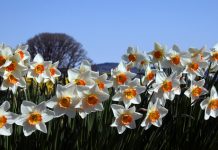Ok, so it’s only an island at high tide. And it’s not really just for you—you will see a few other people when you visit. But after you’ve been to Kiket Island in the Kukutali Preserve, we think you’ll agree that the place is very special. In the midst of the beautiful sights of the Salish Sea, this is an extraordinary little gem: quiet, lovely, unspoiled.
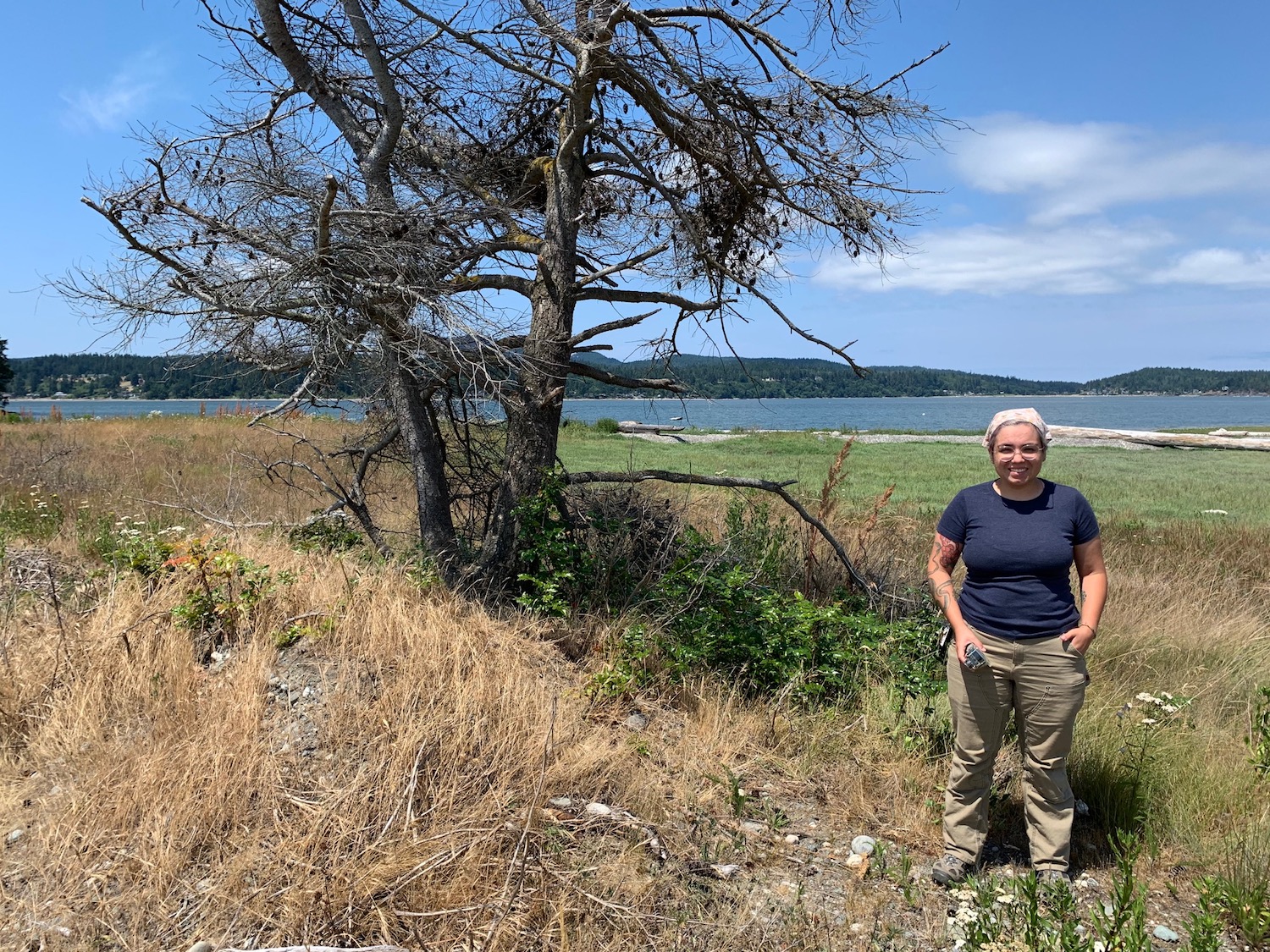
Sasha Parrott, a conservation tech intern with the Swinomish Indian Tribal Community, enjoys working at the preserve. One of her tasks is to swap out the cameras strategically stationed to monitor animal activity, and human too, given the pristine nature of the place. She appreciates that the land is managed by the tribe and the state in partnership. Indeed, it’s the first Washington park to be co-owned and co-managed by a tribe and a state government. “This place is important to the Tribe,” she says.
That may be an understatement. Members of the Swinomish Indian Tribal Community breathed a sigh of relief when Kiket Island was returned to the group in 2010. The land was originally designated for the Swinomish people in 1855 when the reservation system was established, with control allotted to a family who subsequently sold the property. Ownership bounced back and forth between private citizens and other interests, until the Tribe and the Washington State Parks and Recreation Commission agreed to jointly acquire and manage the 80+ acres of Kiket Island and adjacent acres on Fidalgo Island. The Kukutali Preserve opened to the public in 2014.
Visiting the Island
Keeping the island’s lightly touched feel is a priority. Therefore, visitors are asked to observe some special protections, including:
- Don’t bring bikes or pets—just people on foot are allowed
- Stay on designated trails, do not tread on the lagoon area or the north shore
- Don’t go all the way west onto Flagstaff Island, the little nub off the tip of Kiket
- Leave beach resources (shellfish and others) for Tribal members
On very important note: check the tide tables to be sure your visit won’t coincide with high tide. You could be stranded on Kiket Island as the waters streaming through Deception Pass wash over the spit connecting the island to the rest of the preserve.
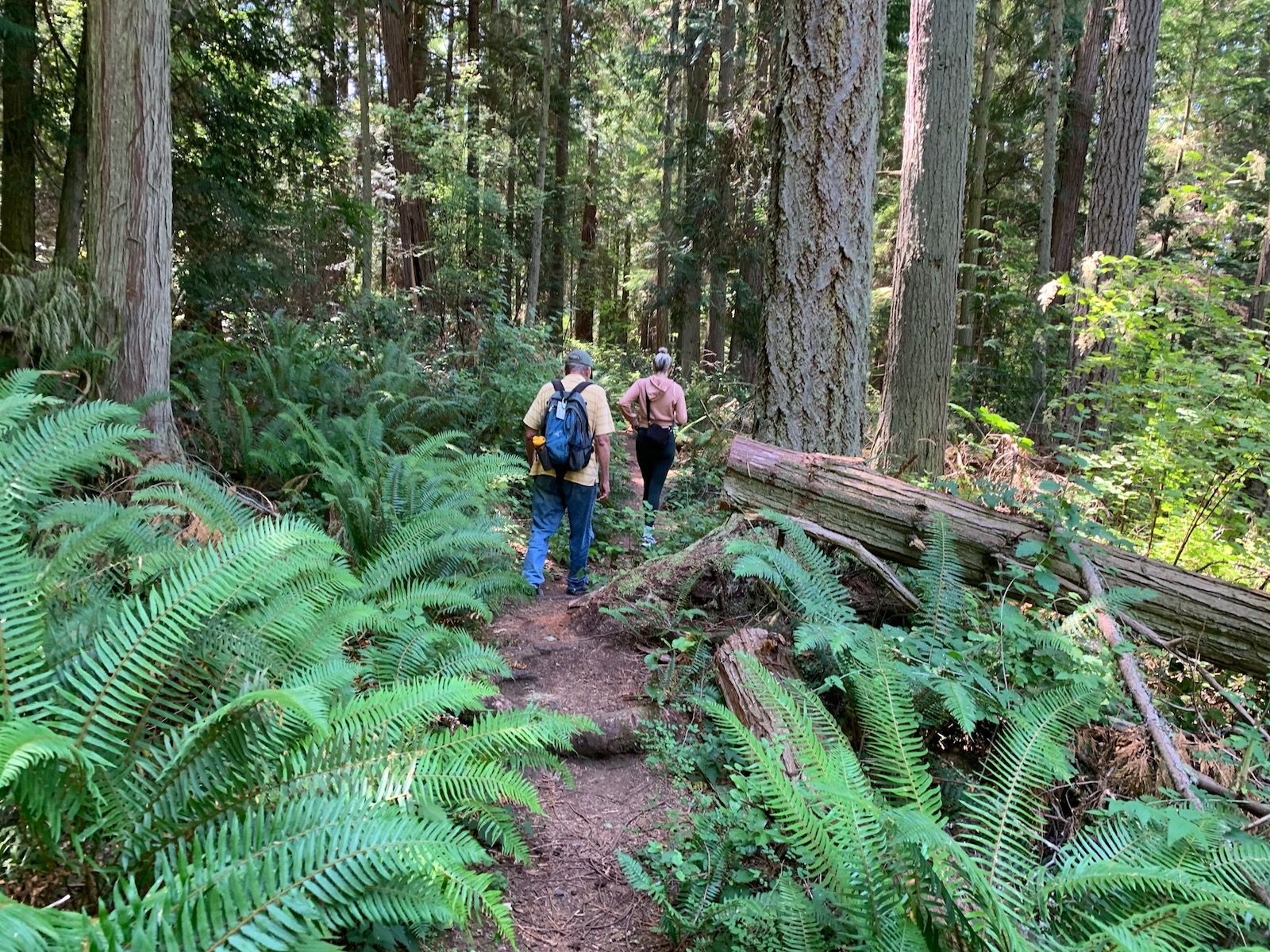
Enjoy Exploring
As you park in the small lot, you’ll see the colorful logo of the preserve on a sign welcoming you. Cattail mats, or Kukutali, were used for temporary shelters by Tribal members fishing and gathering clams. The logo is a representation of a cattail mat creasing tool. The dual heads of the tool represent the two entities partnering to secure the future of Kukutali Preserve and Kiket Island.
Bring a picnic lunch or a snack, water and your binoculars when you come. After parking, walk west on the dirt road. You’ll soon see Kiket Lagoon on your right and enjoy lovely views northwest across Similk Bay toward Fidalgo Island. Continue across the tombolo—the narrow spit of land that connects the lagoon area to Kiket Island. This is the spot that can be underwater at high tide.
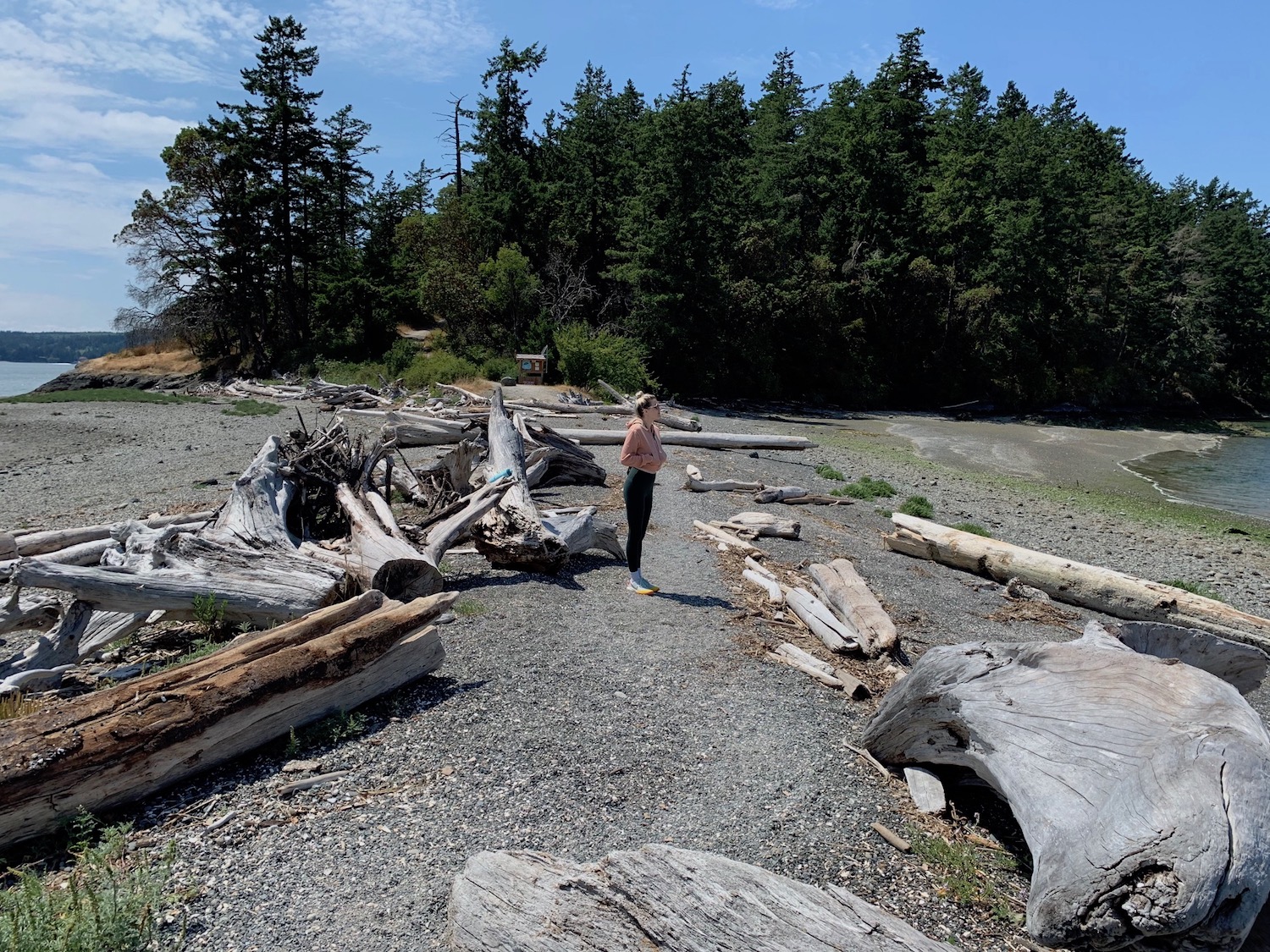
Veer right to follow the northern trail across the island. This easy path winds through a shady forest. Be on the lookout for deer and coyotes, though you may not see many animals in broad daylight. What you will see are birds: eagles, osprey and shore birds galore.
Coming out of the forest, you’ll see an overlook where you can catch a glimpse of Deception Pass Bridge. Madrone trees frame this meadow area, a restored habitat for native Camas, an important food source for Native Americans. This is intern Sasha Parrot’s favorite spot.
Relax a While
Head downhill to another tombolo that connects Kiket Island with tiny Flagstaff Island. Don’t be tempted to explore further—the westernmost point in the preserve is fragile and off limits. Instead, drop your things on the spit and lean on a driftwood backrest for a while. Watch the birds, listen to the water lap at the beach and see boats in the distance. Your stresses will soon float away.
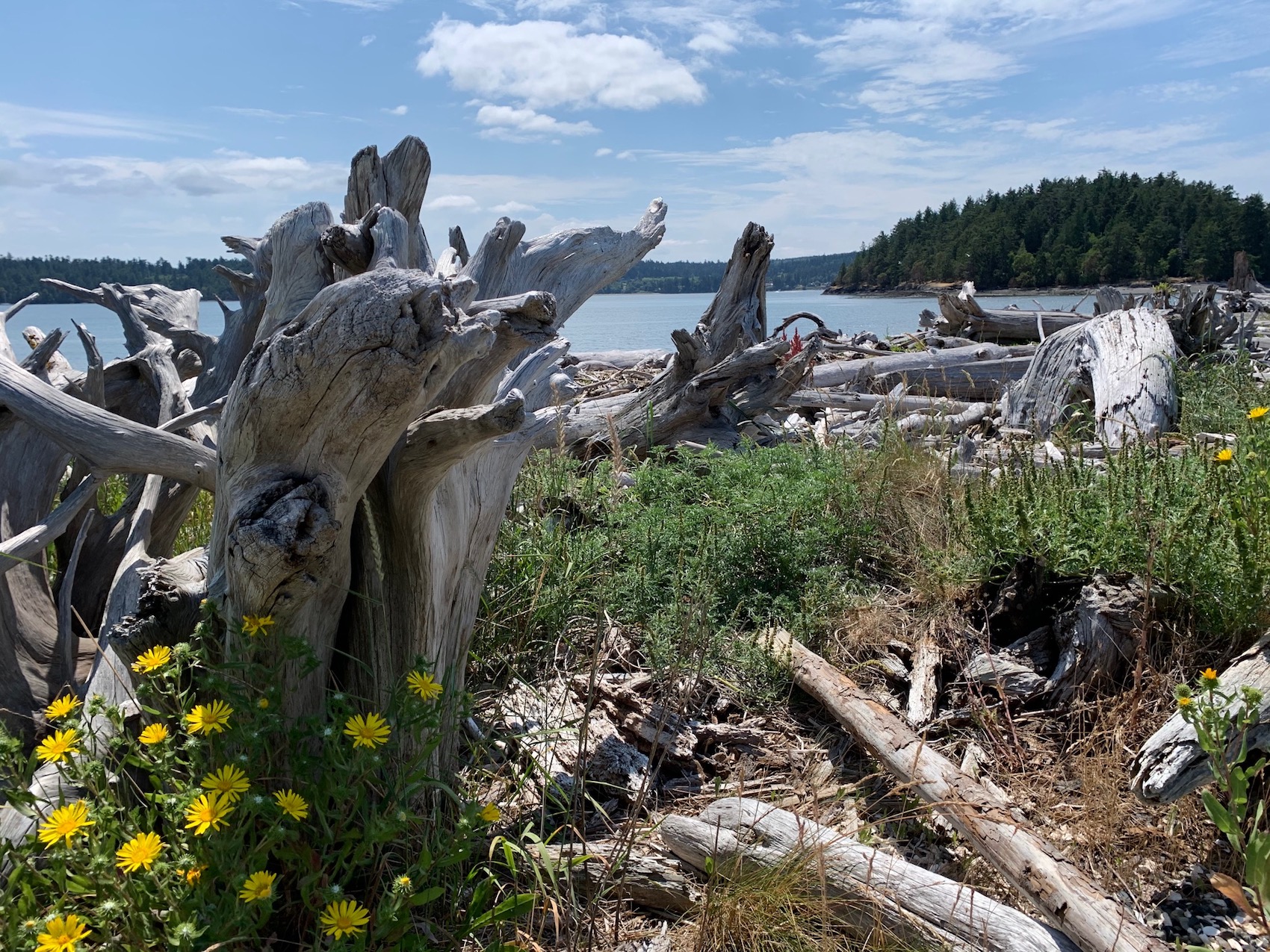
As you relax, consider the notion that part of the preserve was once set to become home to a nuclear power plant. Yes, that plan was on the table about 50 years ago. Soaking in the sights and serenity of the place today, it’s hard to believe anyone would dream up such a thing. Fortunately, cooler heads prevailed.
Before the tide comes in, head back on the south trail to close the loop to the parking lot. This path is flatter and even easier than the north trail—even young kids should be able to walk it with no trouble.
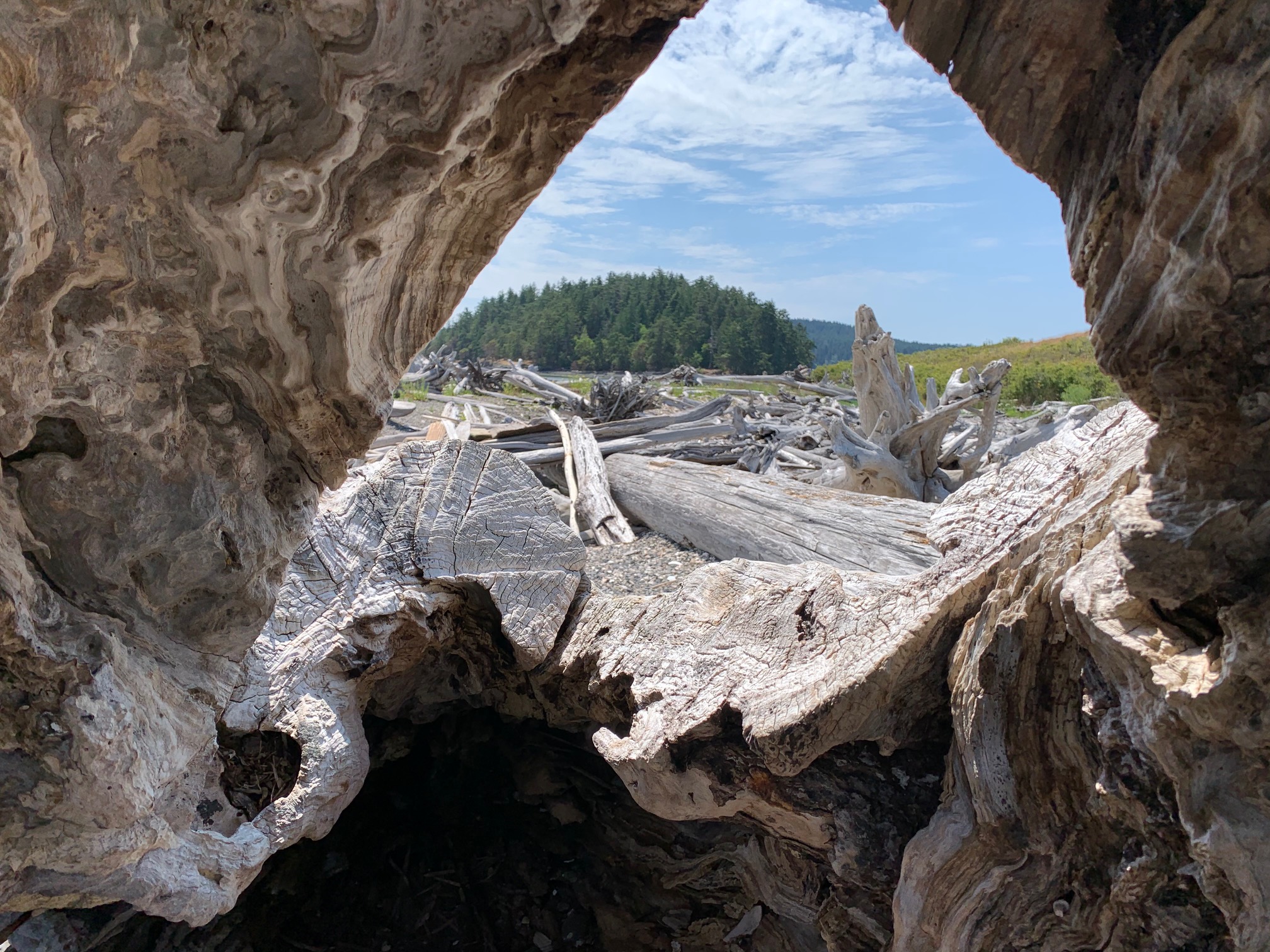
How to Find Kukutali Preserve
To get to the Kukutali Preserve and Kiket Island, take Reservation Road south from Highway 20. Turn right on Snee Oosh Road and look for the parking area on your right. You’ll need your Discover Pass to park, and plan to be back in your car by sunset.





